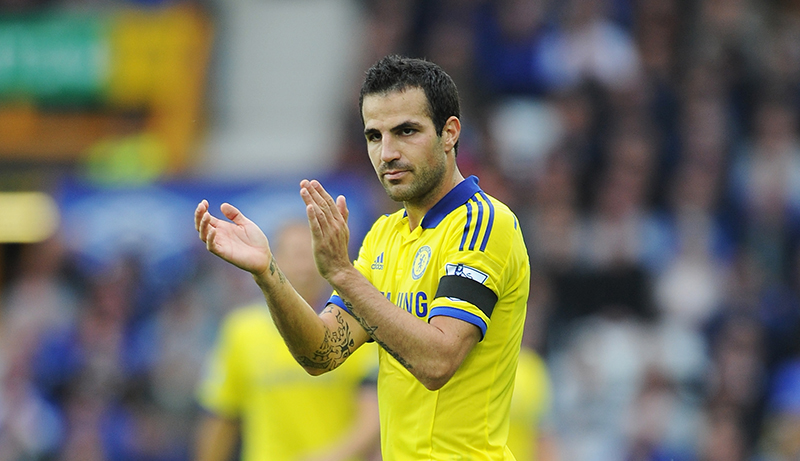Although still early in season, it wouldn’t be premature to think that the Premier League title could be heading to Stamford Bridge. Having made two blockbuster signings in Cesc Fabregas and Diego Costa, Mourinho has added a new dimension to a already strong Chelsea side.
Suggestions are rife that this squad could replicate the feats of Arsenal’s “Invincibles” with the side yet to lose in the league however, are not impenetrable.
Chelsea do concede goals, having let in eleven in thirteen games. Defensively, Chelsea look sound with arguably one of the best keepers in Europe between the sticks in Thibaut Courtios which has even seen the number one of last decade Petr Cech relegated to the bench. Mourinho’s first choice back four of Branislav Ivanovic, Gary Cahill, John Terry and Cesar Azpilicueta are well structured and hard to break down too.
So how is it Chelsea still concede goals? In Mourinho’s 4-2-3-1 formation, the Portuguese manager demands every player works hard during defensive passages of play, with everyone tracking a man and their runs. It is a philosophy that is well drilled and organised throughout the team however, it does not suit certain players.

Nemanja Matic in front of the back four in the midfield two next to Fabregas has been a unsung hero, often winning the ball and breaking down play only to lay it off to the more creative team mates who make the headlines. It is the Serbian who during attacking moves sits in and allows his more creative midfield partner Fabregas to advance forward and join the attack.
Arguably Chelsea’s best player this year after Diego Costa, Cesc Fabregas has been a real hit with the Blues. His vision and pin point passing often carves open defences and it is unlikely Costa would have so many goals if it was not for Fabregas feeding him. In thirteen Premier League games Fabregas has 10 assists, a record at this point in the season and is well on his way to breaking Thierry Henry’s record of twenty assists in one season.
However, despite his stand out performances it is become clear that Cesc Fabregas is defensively frail. During counter attacks Fabregas is often out of position, more attracted to the ball rather than picking up his man. It seems as if he lacks the stamina and positional sense that Matic has to consistently track and mark men when Chelsea don’t have the ball. Fabregas sitting in front of the defence when Chelsea are defending seems to be the Achilles heel in a team that lacks any real weakness.

At Anfield, Emre Can twice broke through midfield and eventually punished Chelsea scoring the opener for Liverool, with Fabregas at fault as he let the German drive through midfield. In the Blues’ most recent fixture away at Sunderland, towards the end of the match Sunderland were breaking through midfield as Fabregas trailed behind. There is no way the returning Mourinho could ever drop a player of Fabregas’ calibre, so what would be a remedy to the situation?
Could swapping Oscar with Fabregas, putting the Spaniard in the number 10 position behind the striker help the situation? Oscar looks more suited to the central midfield role than Fabregas defensively as his work rate is one of the best in the side and even for a number 10, the Brazilian is a top tackler with his terrier-like hustling of opposition players. In 2012-2013, he was Chelsea’s 3rd top tackler and won more than his attacking team-mates combined.
It was that season, when Rafa Benitez was briefly in charge the rumours were that on the training ground the now Napoli manager was trying to mould Oscar into a central midfielder, making the Brazilian international pay close attention to Frank Lampard. There is no doubting that Oscar has the capability to play in the central role as he has all the necessary skills to succeed there.

Playing Fabregas further forward and closer to Diego Costa could also improve the chemistry these two have shown in the early season. Fabregas would be allowed to get space and feed Costa and wingers like Eden Hazard, Willian and Andre Schurrle with the sort of through balls their pace thrives on. Although the ex-Barcelona man will still have defensive duties, there would be another line of defensive before an opposition attacking move reached the likes of Terry and Cahill.
However, in doing so there are a number of cons. Moving Fabregas further forward could see the side lack a player that can dictate the play in the middle of the park. Not only that, but by moving him in the number 10 role it would restrict him to playing shorter more intricate passes rather than the long and switching balls that have had such success this year.

Fabregas’ best quality is no doubt his range of passing and to utilise this to it’s fullest extent he would be best played in the central midfield role next to Matic. However, this has been proven to be penetrable. It could also be argued that Oscar, a player who arrived from Internacional as a winger, is more suited to the number 10 role than Fabregas as he is better with the ball at his feet.
It truly is a conundrum tactically. Does Mourinho sacrifice his star midfield man for defensive reassurance and play him further forward, swapping him for a player that although untested competitively in the central midfield role has the necessary skills to succeed? It is food for thought for Blues fans!

